Camille Bauer SINEAX VS40 Bedienungsanleitung
Camille Bauer
Audio/Video-Konverter
SINEAX VS40
Lies die bedienungsanleitung für Camille Bauer SINEAX VS40 (4 Seiten) kostenlos online; sie gehört zur Kategorie Audio/Video-Konverter. Dieses Handbuch wurde von 3 Personen als hilfreich bewertet und erhielt im Schnitt 4.4 Sterne aus 2 Bewertungen. Hast du eine Frage zu Camille Bauer SINEAX VS40 oder möchtest du andere Nutzer dieses Produkts befragen? Stelle eine Frage
Seite 1/4

Eingang:
Stromfühler:
Widerstand der Kabel:
Messbereich:
Widerstandsbereich:
Min. Span:
Ausgangsspannung:
Ausgangsstrom:
Ausgang bei
Bereichsüberschreitung:
Ausgang bei Defekt:
Strom Ausgangsschutz:
D
SINEAX VS40 - 162959
TEMPERATURE-SIGNALWANDLER FÜR PT100 MIT GALV. TRENNUNG
Allgemeine Beschreibung
Der Wandler VS40 wandelt ein von einem mit 2, 3 oder 4 Leitern angeschlossenen
Fühler PT100 (EN 60 751) gemessenes Temperatursignal in ein genormtes
Spannungs- oder Stromsignal.
Die Eigenschaften des Wandlers sind die stark begrenzten Abmessungen (6,2 mm), die
Verankerung auf DIN-Schiene zu 35 mm, die Möglichkeit der Speisung über Bus, die
schnellen Anschlüsse über Federklemmen, die galvanische 3-Wege Trennung und die
Konfigurierbarkeit vor Ort über DIP-Schalter.
Technische Eigenschaften
Spannungsversorgung:
Leistungsaufnahme:
19,2..30 Vdc
max. 21 mA bei 24 Vdc
Fühler PT100, EN 60751/A2 (ITS90)
Anschluss mit 2, 3 oder 4 Leitern
< 900 uA konstant
max 20 je Leiter
-150..650 °C
20..350
50 °C
Ω
Ω
0 - 5 Vdc, 1 - 5 Vdc, 0 - 10 Vdc und 10 - 0 Vdc
Min. Lastwiderstand 2 K
0 - 20 mA, 4 - 20 mA, 20 - 0 mA und 20 - 4 mA
Max. Lastwiderstand 500
102,5% des Skalenbereiches (siehe Tabelle auf Seite 5)
105% des Skalenbereiches (siehe Tabelle auf Seite 5)
Ω
Ω
annähernd 25 mA
Übertragungsfehler:
Temperaturkoeffizient:
Antwortzeit (10 - 90%):
0,1 % (max. Bereich), oder
(40 K / D + 0,05) % (Messbereich)
< 50 ms (ohne Filter)
< 200 ms (mit Rejektionsfilter 50 Hz)
temp
100 ppm
Isolierungsspannung:
Schutzart:
Umgebungsbedingungen:
Lagertemperatur:
LED-Anzeigen:
Anschlüsse:
Leiterquerschnitt:
Abisolierung der Leiter:
Gehäuse:
Abmessungen, Gewicht:
1,5 KV (50 Hz für 1 Min.)
Temperatur -20..+65°C
30..90 % bei 40°C, nicht kondensierend.
Anzeigefehler, defekter Anschluss, interner Defekt
Federklemmen
IP20
Luftfeuchtigkeit
-40..+85 °C
0,2..2,5 mm
8 mm
2
PBT (schwarze Farbe)
6,2 x 93,1 x 102,5 mm, 50 g.
SINEAX VS40 SINEAX VS40 SINEAX VS40 SINEAX VS40
SINEAX VS40SINEAX VS40SINEAX VS40SINEAX VS40
DEUTSCH - 1/8
DEUTSCH - 2/8 DEUTSCH - 4/8 DEUTSCH - 6/8 DEUTSCH - 8/8
DEUTSCH - 3/8 DEUTSCH - 5/8 DEUTSCH - 7/8
Einsatz des CB-Power-Bus
1 - Setzen Sie die CB-Power-Bus-Anschlüsse zusammen, um die erforderliche Anzahl
von positionen zu erzielen (jeder CB-Power-Bus gestattet die Aufnahme von 2
Modulen)
2 - Setzen Sie den CB-Power-Bus in die Schiene ein; setzen Sie ihn dazu auf
der oberen Seite ein und drehen Sie ihn nach unten
WICHTIG: Schenken Sie der Position der vorstehenden Klemmen der Busschiene eine
erhöhte Aufmerksamkeit. Der CB-Power-Bus muss so in die DIN-Schiene gesetzt
werden, so dass die vorstehenden Klemmen links liegen (wie im Bild), anderenfalls
sind die Wandler kopfüber montiert.
Eingang
Das Modul ist für den Anschluss an einen Temperaturfühler PT100 (EN 60 751) über
2, 3 oder 4 Leiter geeignet.
Anschluss, der bei Entfernungen von weniger als 10 m zwischen Modul und Fühler
verwendet wird; dabei muss berücksichtigt werden, dass ein Messfehler erzeugt wird,
der dem Widerstand der beiden Verbindungskabel entspricht.
DIP-Schalter SW1-1 in Position 1 (AN) (2 / 4 Draht).
Mit Brücken zwischen Klemmen 1 und 2 und Klemmen 3 und 4.
Anschluss, der bei Entfernungen von mehr als 10 m zwischen Modul und Fühler
verwendet wird, da das Instrument eine Kompensierung des Widerstands der
Anschlusskabel vornimmt. Für eine korrekte Kompensierung muss der Widerstand der
beiden Kabel gleich sein, da das Instrument den Widerstand eines Kabels misst und
voraussetzt, dass der Widerstand des anderen Kabels gleich ist.
DIP-Schalter SW1-1 in Position 0 (AUS) (3 Draht).
Mit Brücke zwischen den Klemmen 3 und 4.
Anschluss, der bei Entfernungen von mehr als 10 m zwischen Modul und Fühler
verwendet wird, gestattet die Erzielung der max. Präzision, da das Instrument die
Kompensierung des Widerstands der Verbindungskabel vornimmt. Bei diesem
Anschluss besteht das Problem des Widerstands zwischen den beiden Kabeln nicht,
da das Instrument den Widerstand beider Kabel misst.
DIP-Schalter SW1-1 in Position 1 (AN) (2 / 4 Draht).
2-Draht Anschluss
3-Draht Anschluss
4-Draht Anschluss
Anweisungen zur Installation
Das Modul ist für die Montage auf Schienen nach DIN 46277 ausgelegt. Für eine
bessere Belüftung des Moduls empfehlen wir die Montage in vertikaler Stellung sowie
die Vermeidung der Positionierung in Kanälen oder von sonstigen Gegenständen, die
eine Belüftung behindern.
Vermeiden Sie die Installation des Moduls über Geräten, die Wärme erzeugen; wir
empfehlen die Installation im unteren Bereich der Schalttafel oder des Gehäuses.
Wir empfehlen die Montage auf der Schiene mit dem entsprechenden Anschlussbus
(Bestellnr. CB-Power-Bus), der das Anschließen der Speisung an jedes einzelne Modul
überflüssig macht.
Normen:
EN50081-2 (elektromagnetische Emission, industrielle
Umgebung)
EN50082-2 (elektromagnetische Immunität, industrielle
Umgebung)
EN61010-1 (Sicherheit)
Alle Schaltungen müssen mit doppelter Isolierung gegen
Schaltungen mit gefährlicher Spannung isoliert werden.
Der Speisungstransformator muss der Norm EN60742:
“Isolierungstransformatoren und
Sicherheitstransformatoren” entsprechen.
1 - Setzen Sie das Modul in den oberen
Teil der Schiene ein
2 - Drücken Sie das Modul nach unten
1 - Hebeln Sie mit einem Schraubenzieher
(wie auf der Abbildung gezeigt)
2 - Drehen Sie das Modul nach oben
Montage des Moduls in der Schiene
Entfernung des Moduls von der Schiene
ELEKTRISCHE VERBINDUNG
8 mm
0,2..2,5 mm
2
Das Modul besitzt Federklemmen für die elektrischen
Anschlüsse.
Nehmen Sie bei den Anschlüssen auf die folgenden
Anweisungen Bezug:
1 Entfernen Sie 0,8 cm der Isolierung am Ende der
Kabel
2 Führen Sie einen Schraubenzieher in die
quadratische Öffnung ein und drücken Sie ihn, bis sich
die Feder öffnet, die das Kabel blockiert
3 Führen Sie das Kabel in die runde Öffnung ein
4 Ziehen Sie den Schraubenzieher heraus und
überprüfen Sie, ob das Kabel sicher in der Klemme
befestigt ist.
Spannungsversorgung
Es bestehen verschiedene Möglichkeiten für die
Speisung der Module der Serie VS.
1 - Direkte Speisung der Module durch Anschluss
der Speisung von 24 Vdc direkt an die Klemmen 7
(+) und 8 (-) jedes einzelnen Moduls
15
6
7
8
2
3
4
POWER
SUPPLY
OUTPUT
INPUT
19.2..30 Vdc
+
-
2 - Verwendung des Zubehörartikels CB-Power-Bus für die Verteilung der Speisung an die
Module über Bus, wodurch die Speisung jedes einzelnen Moduls überflüssig wird.
Über den Bus können alle Module gespeist werden; die Gesamtleistungsaufnahme des
Busses muss unter 400 mA liegen. Bei größeren Leistungsaufnahmen können die
Module beschädigt werden. In die Speisung muss eine entsprechend bemessene
Sicherung in Reihe eingesetzt werden.
3 - Verwendung des Zubehörartikels CB-Power-Bus für die Distribution der Speisung der
Module über Bus sowie des Zubehörartikels VS70 für denAnschluss an die Speisung.
Das VS70 ist ein Modul mit einer Breite von 6,2 mm, das eine Reihe von
Schutzschaltungen zum Schutz der über den Bus angeschlossenen Module gegen
eventuelle Überspannungen aufweist.
Der Bus kann über ein Modul VS70 gespeist werden, falls die
Gesamtleistungsaufnahme des Busses unter 1,5 A liegt. Bei höheren
Leistungsaufnahmen können das Modul oder der Bus beschädigt werden. In die
Speisung muss eine entsprechend bemessene Sicherung in Reihe eingesetzt werden.
Ausgang
Spannungsanschluss - Stromanschluss (Fremdstrom)
Anmerkung: Zur Reduzierung der Dissipation des Instruments sollte der
Spannungsausgang verwendet oder eine Last von > am Stromausgang
garantiert werden.
250 Ω
15
6
7
8
2
3
4
POWER
SUPPLY
OUTPUT
INPUT
V / I
+
-
Anzeige mit LED auf der Front
LED Bedeutung
Schnell blinkend
1 Impuls/sec
Interne Fehlfunktion
Langsam blinkend
3 Impulse/sec
DIP-Schalter Einstellungsfehler
Dauerhaft an PT100 Verdrahtung Fehlfunktion.
3ter Drahtwiderstand Bereichsüberschreitung.
- Schließen Sie nie die Speisung direkt am Bus der DIN-Schiene an.
- Greifen Sie die Speisung weder direkt, noch über die Klemmen der Module
ab.
!
MESSBEREICH START
6SW1 7 8 °C
0
-10
-20
-30
-40
-50
-100
-150
PT100 VERDRAHTUNG
1SW1
3 Draht
2 / 4 Draht
EINGANGSFILTER (*)
2SW1
Vorhanden
Abwesend
(*) Der Eingangsfilter verlangsamt die Antwortzeit auf 200 ms und garantiert die
Rejektion des 50-Hz-Störungssignals, welches das Messsignal überlagert.
AUSGANGSSIGNAL
3SW1 4 5
0..20 mA
20..0 mA
4..20 mA
20..4 mA
0..10 Vdc
10..0 Vdc
0..5 Vdc
1..5 Vdc
MESSBEREICH OBERER WERT
1 1SW2SW2 1SW22 2 23 3 34 4 45 5 56 6 6°C °C °C
0 120 340
5 130 350
10 140 360
15 150 370
20 160 380
25 170 390
30 180 400
35 190 410
40 200 420
45 210 430
50 220 440
55 230 450
60 240 480
65 250 500
70 260 520
75 270 550
80 280 580
85 290 600
90 300 620
95 310 650
100 320
110 330
(*) Siehe untere Tabelle für die dazu gehörigen Werte.
Ausgangsgrenzwert Überbereich/ Fehlfunktion 2,5 %± Fehlfunktion 5 %±
20 mA 20,5 mA 21 mA
4 mA 3,5 mA 3 mA
0 mA 0 mA 0 mA
10 Vdc 10,25 Vdc 10,5 Vdc
5 Vdc 5,125 Vdc 5,25 Vdc
1 Vdc 0,875 Vdc 0,75 Vdc
0 Vdc 0 Vdc 0 Vdc
AUSGANGSSIGNAL BEI FEHLFUNKTION
7SW2
Zum oberen Wert des Ausgangssignalbereichs
Zum unteren Wert des Ausgangssignalbereichs
BEREICHSÜBERSCHREITUNG (*)
8SW2
JA: eine 2.5%ige Bereichsüberschreitung ist akzeptabel; eine 5%ige
Bereichsüberschreitung wird als Fehlfunktion betrachtet
NEIN: die Fehlfunktion alleine verursacht einen 2.5%igen Überschreitungswert
Alle DIP-Schalter des Moduls befinden sich in der Position 0 als Standardkonfiguration.
Die Einstellungen entsprechen den folgenden Werten:
Obige Einstellungen sind also nur gültig, wenn alle DIP-Schalter auf 0 stehen. Wird
auch nur ein DIP-Schalter verändert, ist es erforderlich, alle anderen Parameter wie
folgt neu einzustellen.
Pt100
Eingangsfilter
Ausgangssignal
Messbereich Anfang
Maximaler Messbereich
Ausgangssignal bei Fehlfunktion
Bereichsüberschreitung
3-Draht
vorhanden
4..20 mA
0 °C
100 °C
In Richtung oberer Wert des Ausgangssignals
JA: ein Wert von mehr als 2.5% ist akzeptierbar;
ein Wert von mehr als 5% wird als Fehlfunktion
interpretiert
EINSTELLUNG DER DIP-SCHALTER
Werkseinstellung
MERKE: Für alle nachfolgenden Tabellen
Die Angabe von zeigt an, dass der DIP-Schalter in Position 1 steht (AN).
Keine Angabe bedeutet, dass der DIP-Schalter in der Position 0 steht (AUS).
15
6
7
8
2
3
4
POWER
SUPPLY
OUTPUT
INPUT
4-Draht Anschluss
1
2
3
4
3-Draht Anschluss
1
2
3
4
2-Draht Anschluss
1
2
3
4
RTD transmitter (PT100)
with galvanic insulation
0
1
1
5
6
7
8
2
3
4
SW1
SW2
POWER
SUPPLY
OUTPUT
INPUT
19.2..30 Vdc
P < 500 mW
V / I
+
+
-
-
PT100 4 / 3 / 2 wires
Range : -150..650 °C
Load : R 500 / R 2 k
I meas. : < 900 A
Test Voltage : 1.5 kV, 50 Hz, 1 min
Amb. Temp. : -20..+65 °C
< >
m
W
W
V
I
SINEAX VS40
RTD transmitter (PT100)
with galvanic insulation
0
1
15
6
7
8
2
3
4
SW1 SW2
POWER
SUPPLY
OUTPUT
INPUT
19.2..30 Vdc
P < 500 mW
V / I
+
+
-
-
PT100 4 / 3 / 2 wires
Range : -150..650 °C
Load : R 500 / R 2 k
I meas. : < 900 A
Test Voltage : 1.5 kV, 50 Hz, 1 min
Amb. Temp. : -20..+65 °C
< >
m
WW
VI
SINEAX VS40
Entsorgung von alten Elektro und Elektronikgeräten (gültig in der Europäischen Union und anderen
europäischen Ländern mit separatem Sammelsystem)
Dieses Symbol auf dem Produkt oder auf der Verpackung bedeutet, dass dieses Produkt nicht wie HausmuII
behandelt werden darf. Stattdessensoll dieses Produkt zu dem geeigneten Entsorgungspunkt zum Recyclen
von Elektro und Elektronikgeräten gebracht werden. Wird das Produkt korrekt entsorgt, helfen Sie mit,
negativen Umwelteinflüssen und Gesundheitsschäden vorzubeugen, die durch unsachgemäße Entsorgung
verursacht werden könnten. Das Recycling von Material wird unsere Naturressourcen erhalten. Für nähere
Informationen über das Recyclen dieses Produktes kontaktieren Sie bitte Ihr lokales Bürgerbüro, Ihren
HausmüllAbholserviceoderdasGeschäft,indemSiediesesProduktgekaufthaben.
MI001830-F/D
Camille Bauer AG
Aargauerstrasse 7
CH-5610 Wohlen/Switzerland
Phone +41 56 618 21 11
Fax +41 56 618 35 35
e-Mail: info@camillebauer.com
http://www.camillebauer.com

Voltage output:
Current output:
Output in case of over-range:
Output in case of
malfunction:
Current output protection:
SINEAX VS40 - 162959
TEMPERATURE-INSULATED CONVERTER FOR PT100 PROBES
General Description
The VS40 instrument converts a temperature signal read by a PT100 probe (EN 60
751) with connection by 2, 3 or 4 wires into a signal normalised in voltage or current.
Resolution 14 bit.
The module's main features are its compact size (6.2 mm), attachment to a 35 mm DIN
rail, bus-connector power supply option, quick connection by spring terminals, 3-point
insulation, and easy configuration in the field by DIP-switch.
Technical Features
Power supply:
Consumption:
19,2..30 Vdc
Max 21 mA at 24 Vdc
Input:
Current on sensor:
Cable resistance:
Measurement Range:
Resistance Range:
Minimum span :
PT100 probe, EN 60751/A2 (ITS90)
connection by 2, 3 or 4 wires
< 900 uA
Max. 20 per wire
-150..650 °C
20..350
50 °C
Ω
Ω
0..5 Vdc, 1..5 Vdc, 0..10 Vdc and 10..0 Vdc
Minima load resistance: 2 K
0..20 mA, 4..20 mA, 20..0 mA e 20..4 mA
Maximum load resistance: 500
102.5% of full scale value (see Table on Page 5)
105% of full scale value (see Table on Page 5)
25 mA
Ω
Ω
approximately
Transmission error:
Temperature Coefficient:
Response time (10..90 %):
0.1 % (max. range), or
(40 K / temp + 0.05) % (Measurement range)
< 50 ms (without filter)
< 200 ms (with repeat filter 50 Hz)
D
100 ppm
Insulation Voltage:
Protection Index:
Operating Conditions:
Storage Temperature:
LED Signalling:
Connections:
Conductor Section:
Wire stripping:
Box:
Dimensions, Weight:
1,5 KV (50 Hz for 1 min )
Temperature -20..+65 °C
Humidity 30..90 % at 40°C (non-condensing)
Setting error, connection malfunction, internal
malfunction
Spring terminals
IP20
-40..+85 °C
0,2..2,5 mm
2
8 mm
PBT (black colour)
6,2 x 93,1 x 102,5 mm, 50 g.
ENGLISH - 1/8 ENGLISH - 5/8 ENGLISH - 7/8
ENGLISH - 2/8 ENGLISH - 6/8 ENGLISH - 8/8
ENGLISH - 3/8
ENGLISH - 4/8
EN
Using the CB-Power-Bus connector
1 - Compose the CB-Power-Bus connectors as required in order to obtain the number of
positions necessary (each CB-Power-Buspermits the insertion of no. 2 modules).
2 - Insert the CB-Power-Bus connectors in the rail by positioning them on the upper side of
the rail and then rotating them downwards.
Pay particular attention to the position of the protrudent terminals of the
CB-Power-Bus. The CB-Power-Bus must be inserted in the guide with the protrudent
terminals on the left (as shown in the figure) otherwise the modules are turned upside
downs.
IMPORTANT:
Input
The module accepts input from a PT100 temperature probe ( EN 60 751 ) with connection
by 2, 3 or 4 wires.
The use of shield cables is recommended for the electronic connections.
This is the connection to be used for short distances ( < 10 m ) between module and probe,
bearing in mind that it adds an error equivalent to the resistance contributed by the
connection cables to the measurement.
DIP-switch SW1-1 set in Position 1 (ON) (2 / 4 wires).
With bridges between Terminals 1 and 2 and Terminals 3 and 4.
This is the connection to be used for media-long distances ( > 10 m ) between module and
probe. The instrument performs compensation for the resistance of the connection cables.
In order for compensation to be correct, it is necessary that the resistance values of all
cables be equal because in order to perform compensation the instrument measures the
resistance of only one cable and assumes the resistance of the others cables to be exactly
the same.
DIP-switch SW1-1 set in Position 0 (OFF) (3 wires).
With bridge between Terminals 3 and 4.
This connection to be used for media-long distances ( > 10 m ) between module and probe.
Provides the maximum precision because the instrument measure the resistance of the
sensor independently of the resistance of the connection cables.
DIP-switch SW1-1 set in Position 1 (ON) (2 / 4 wires).
2-wire connection
3-wire connection
4-wire connection
Installation rules
This module has been designed for assembly on a DIN 46277 rail. Assembly in vertical
position is recommended in order to increase the module's ventilation, and no raceways or
other objects that compromise aeration must be positioned in the vicinity.
Do not position the module above equipment that generates heat; we recommend
positioning the module in the lower part of the control panel or container compartment.
We recommend rail-type assembly using the corresponding bus connector (Code CB-
Power-Bus) that eliminates the need to connect the power supply to each module.
Standards:
EN50081-2 (electromagnetic emission, industrial
surroundings)
EN50082-2 (electromagnetic immunity, industrial
surroundings)
EN61010-1 (safety)
All the circuits must be provided with double insulation
from the circuits under dangerous voltage. The power
supply transformer must be built to compliance with
EN60742: “Insulation transformers and Safety
transformers”.
1 -Attachthe module in the upper part of
the rail.
2 - Press the module downwards.
1 -Applyleverage using a screwdriver (as
shown in the figure).
2 - Rotate the module upwards.
Inserting the module in the rail
Removing the module from the rail
Electrical Connections
8 mm
0,2..2,5 mm
2
The module has been designed for spring-type terminal
electrical connections.
Proceed as follows to make the connections:
1 - Strip the cables by 0.8 mm
2 - Insert a screwdriver in the square hole and press it
until the cable lock spring opens.
3 - Insert the cable in the round hole.
4 - Remove the screwdriver and make sure that the cable
is tightly fastened in the terminal.
Power supply
There are various ways to provide the VS Series
modules with power.
1 - Direct power supply to the modules by
connecting 24 Vdc power supply directly to
Terminals 7 ( + ) and 8 ( - ) of each module.
15
6
7
8
2
3
4
POWER
SUPPLY
OUTPUT
INPUT
19.2..30 Vdc
+
-
2 - Using the CB-Power-Bus connector accessory for the distribution of the power supply to
the modules via bus connector, in this way eliminating the need to connect power supply to
each module.
The bus can be supplied from any of the modules; the total absorption of the bus must be
less than 400 mA. Higher absorption values can damage the module. An appropriately
sized fuse must be connected in series to the power supply.
3 - Using the CB-Power-Bus connector accessory for the distribution of the power supply to
the modules via bus connector and the VS70 accessory for the connection of the power
supply.
The VS70 accessory is a 6.2 mm wide module that contains a set of protections designed
to protect the modules connected via bus against over-voltage loads.
The bus connector can be provided with power using the VS70 module if the total
absorption of the bus is less than 1.5 A. Higher absorption values can damage both the
module and the bus. An appropriately sized fuse must be connected in series to the power
supply.
Output
Voltage connection - Current connection (applied current)
The use of shield cables is recommended for the electronic connections.
Note: in order to reduce the instrument's dissipation, we recommend either using the
output for voltage or guaranteeing a load of > 250 to the current output.
Ω
15
6
7
8
2
3
4
POWER
SUPPLY
OUTPUT
INPUT
V / I
+
-
LED indications on the front
LED Meaning
Rapid flashing
1 pulse/sec.
Internal malfunction
Slow flashing
3 pulses/sec.
DIP-switch setting error
Steady light PT100 connection wire malfunction. 3 wire resistance over-range.
rd
-
-
Never connect the power supply directly to the bus connector on the DIN
rail.
Never tap power supply from the bus connector either directly or by using
the module's terminals.
!
SETTING OF THE DIP-SWITCHES
Factory setting
All the module DIP switches are at pos. 0 as defaut configuration.
This set correspond to the following configuration :
It is understood that this configuration is valid only with all the DIP switches at position
0.
If also one Dip is moved, it is necessary to set all the other parameter as indicated on
the following tables.
PT100 wiring
Input Filter
Output Signal
Measurement Range Start
Measurement Full-Scale
Output signal in case of
Malfunction
Over-Range
3 wires
present
4..20 mA
0 °C
100 °C
Towards the top of the output range
YES: a 2.5% over-range value is acceptable;
a 5% over-range value is considered a malfunction.
Note: for all following tables
The indication indicatesthat the DIP-switch is set in Position 1 (ON).
No indication is provided when the DIP-switch is set in Position 0 (OFF).
MEASUREMENT RANGE START
6SW1 7 8 °C
0
-10
-20
-30
-40
-50
-100
-150
PT100 WIRING
1SW1
3 wires
2 / 4 wires
INPUT FILTER (*)
2SW1
Present
Absent
(*) The input filter slows down the response time to around 200 ms and guarantees the
repeating of the disturbance signal at 50 Hz overlapping the measurement signal.
OUTPUT SIGNAL
3SW1 4 5
0..20 mA
20..0 mA
4..20 mA
20..4 mA
0..10 Vdc
10..0 Vdc
0..5 Vdc
1..5 Vdc
MEASUREMENT FULL SCALE
1 1SW2SW2 1SW22 2 23 3 34 4 45 5 56 6 6°C °C °C
0 120 340
5 130 350
10 140 360
15 150 370
20 160 380
25 170 390
30 180 400
35 190 410
40 200 420
45 210 430
50 220 440
55 230 450
60 240 480
65 250 500
70 260 520
75 270 550
80 280 580
85 290 600
90 300 620
95 310 650
100 320
110 330
(*) See the table below for the corresponding values.
Output signal limit Over-range / Malfunction
± 2,5 % Malfunction ± 5 %
20 mA 20,5 mA 21 mA
4 mA 3,5 mA 3 mA
0 mA 0 mA 0 mA
10 Vdc 10,25 Vdc 10,5 Vdc
5 Vdc 5,125 Vdc 5,25 Vdc
1 Vdc 0,875 Vdc 0,75 Vdc
0 Vdc 0 Vdc 0 Vdc
OUTPUT SIGNAL IN CASE OF MALFUNCTION
7SW2
Towards the top of the output range
Towards the bottom of the output range
OVER-RANGE (*)
8SW2
YES: a 2.5% over-range value is acceptable;
a 5% over-range value is considered a malfunction.
NO: the malfunction alone causes a 2.5% over-range value.
15
6
7
8
2
3
4
POWER
SUPPLY
OUTPUT
INPUT
PT100 4 wires
1
2
3
4
PT100 3 wires
1
2
3
4
PT100 2 wires
1
2
3
4
The PT100 measure is effected in impulsive way for a very short time to reduce the
module consumption. For this reason, some electronic calibrators could not be able to
generate the simulated signal in the right way.
RTD transmitter (PT100)
with galvanic insulation
0
1
15
6
7
8
2
3
4
SW1 SW2
POWER
SUPPLY
OUTPUT
INPUT
19.2..30 Vdc
P < 500 mW
V / I
+
+
-
-
PT100 4 / 3 / 2 wires
Range : -150..650 °C
Load : R 500 / R 2 k
I meas. : < 900 A
Test Voltage : 1.5 kV, 50 Hz, 1 min
Amb. Temp. : -20..+65 °C
< >
m
WW
VI
SINEAX VS40
RTD transmitter (PT100)
with galvanic insulation
0
1
1
5
6
7
8
2
3
4
SW1
SW2
POWER
SUPPLY
OUTPUT
INPUT
19.2..30 Vdc
P < 500 mW
V / I
+
+
-
-
PT100 4 / 3 / 2 wires
Range : -150..650 °C
Load : R 500 / R 2 k
I meas. : < 900 A
Test Voltage : 1.5 kV, 50 Hz, 1 min
Amb. Temp. : -20..+65 °C
< >
m
W
W
V
I
SINEAX VS40
Disposal of Electrical & Electronic Equipment (Applicable throughout the EuropeanUnion
and other European countrieswithseparatecollection programs)
This symbol, found on your product or on its packaging, indicates that this product should not be
treated as householdwaste when you wishto dispose of it.Instead, it should behanded over to an
applicable collection pointforthe recycling of electricaland electronic equipment. Byensuring this
product is disposed of correctly, you will help prevent potential negative consequences to the
environment and human health, which could otherwise be caused by inappropriate disposal of
this product.The recycling of materialswill helpto conserve natural resources. For more detailed
information about therecyclingof this product,pleasecontact your local cityoffice,waste disposal
service or thè retailstorewhereyou purchased this product.
MI001830-I/E
Camille Bauer AG
Aargauerstrasse 7
CH-5610 Wohlen/Switzerland
Phone +41 56 618 21 11
Fax +41 56 618 35 35
e-Mail: info@camillebauer.com
http://www.camillebauer.com
SINEAX VS40
SINEAX VS40
SINEAX VS40
SINEAX VS40
SINEAX VS40
SINEAX VS40
SINEAX VS40
SINEAX VS40
Produktspezifikationen
| Marke: | Camille Bauer |
| Kategorie: | Audio/Video-Konverter |
| Modell: | SINEAX VS40 |
Brauchst du Hilfe?
Wenn Sie Hilfe mit Camille Bauer SINEAX VS40 benötigen, stellen Sie unten eine Frage und andere Benutzer werden Ihnen antworten
Bedienungsanleitung Audio/Video-Konverter Camille Bauer

4 September 2025
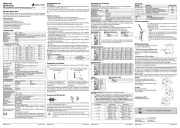
3 September 2025
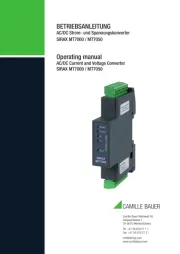
3 September 2025
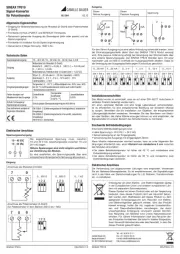
3 September 2025
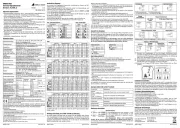
3 September 2025
Bedienungsanleitung Audio/Video-Konverter
- Tascam
- Rocstor
- Kramer
- JL Audio
- Lindy
- Speaka
- Evolution
- Ebode
- Avenview
- Antelope Audio
- Pyle
- Lynx Technik
- Conceptronic
- SWIT
- TP-Link
Neueste Bedienungsanleitung für -Kategorien-
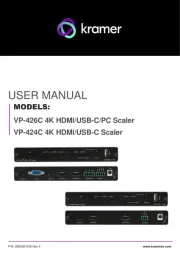
4 September 2025
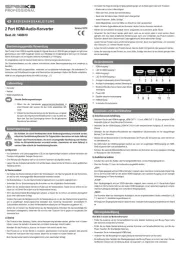
4 September 2025
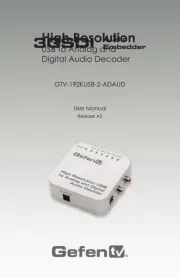
4 September 2025
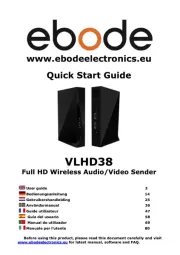
3 September 2025
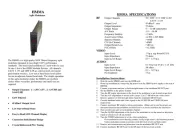
2 September 2025
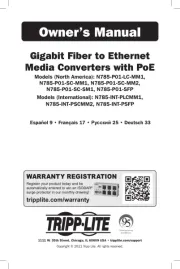
1 September 2025
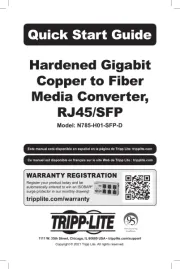
1 September 2025
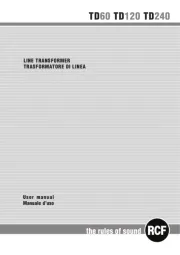
1 September 2025
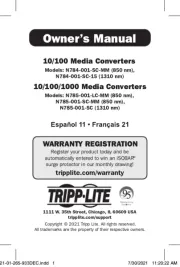
1 September 2025
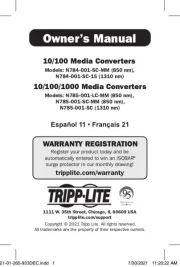
1 September 2025